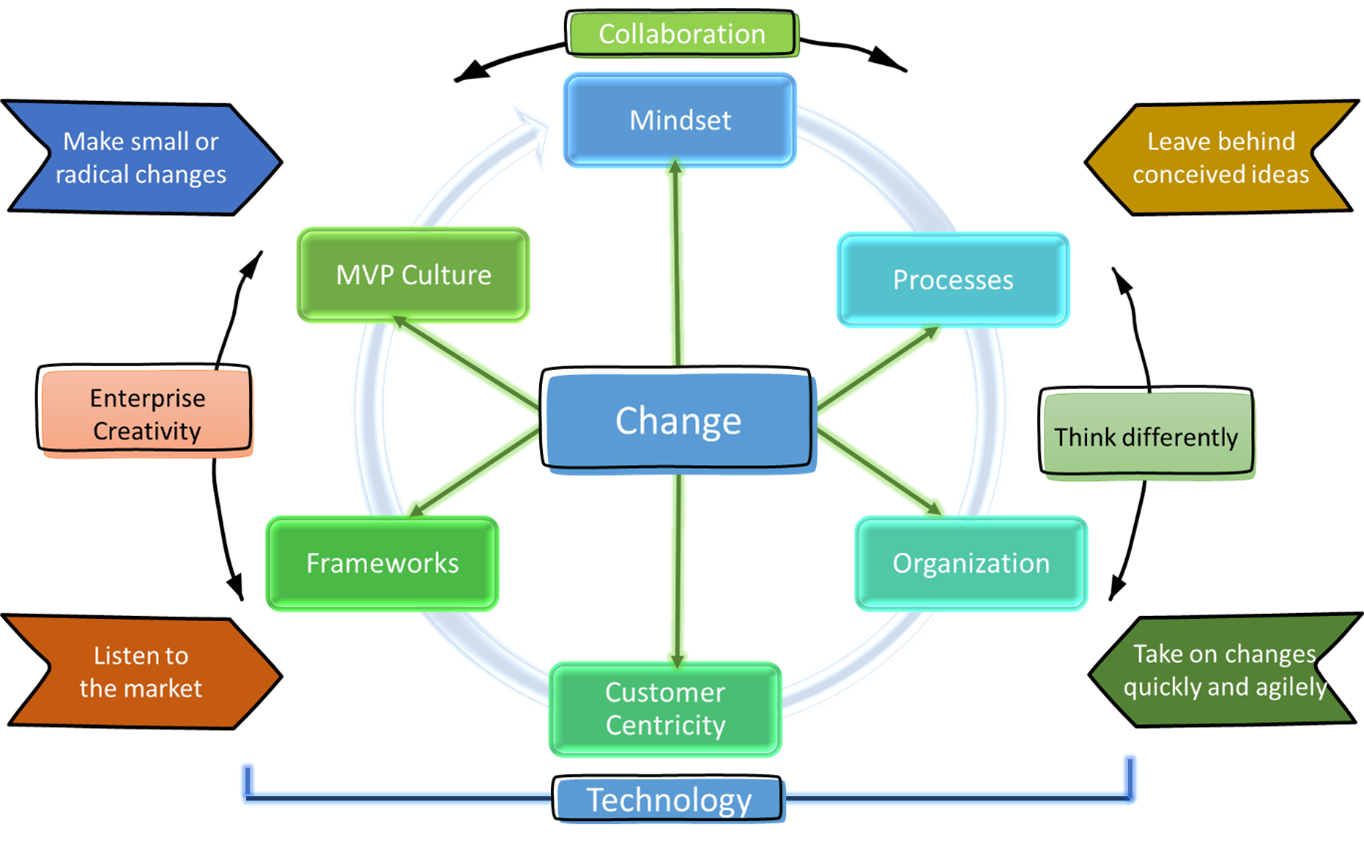This past year has been a bit of a respite from the chaos of the last couple of years as many people have settled into working from home, in the office, or some combination. We seem to have arrived at a new normal, at least as it relates to where we’re physically working.
Fortunately, much of what we’re working on and observing from our business training is as dynamic as ever. As members of the Educate 360 family have been doing for the last 30 years, we try to keep our finger on the pulse of what we see happening that suggests trends in various areas of our business world. This year, we are organizing our trends a little differently to better reflect the interplay between the areas we are watching, such as traditional disciplines like project management and business analysis. Further, as our Educate 360 family of specialized training brands continues to grow, we can include more topics to accommodate our broadening range of knowledge and expertise that more comprehensively reflect what’s happening in the business world.
With that in mind, our 2023 Trends Watchlist includes trends in:
Project Work and Product Delivery
- PM Skills and PM Processes
- Use Cases are Back!
- Business Relationship Management is a Hot Certification for Everyone
- Wither “Transformation”?
- From “Projects” to “Products” Continues
- Refocusing on Value
- PMO – “Pretty Much Over”?
Data Science
Cloud and Information Security
- Serverless Architecture
- The Security Risks of Digital Nomads
- Shifting the Surface Area of Attacks in a Remote World
Power Skills and Leadership
- Staying Disciplined to Priorities – Adding Less to Do More.
- The 45-minute Meeting
- Attracting & Retaining Talent…Continued
We’d love to hear your thoughts about our observations and prognostications. Join our webinar on January 5, 2023 to hear our contributors talk about these trends, get your thoughts, and answer questions. (Date has passed.)
____________________________________________________________________________
Project Work and Product Delivery
PM Skills and PM Processes
In the world of project management, we are noticing more awareness of separating project management skills and project management processes. Organizational leaders know when projects are not producing the results expected; the challenge is understanding whether that is a consequence of the knowledge and competencies of the people working on projects, how projects are managed in the organization, or both. Of course, good processes can contribute to better skills and good skills can help develop good processes, but they are two different things. In our discussions with clients, they are paying more attention to whether they need to work on developing the skills of their practitioners or improve their project management processes. As with any good problem-solving, understanding the cause of the problem makes for a more strategic and ultimately successful investment of resources to fix it.
Use Cases are Back!
Use cases became widely adopted in the 1990s as a core model in Rational Unified Process (RUP). They are technology independent so there are no constraints as to how they can be used. Use cases were to be written from a business perspective, in business terminology for the end users to tell a story about their expectations of the system, that is, “If I do this, this is how I expect the solution to respond.” Unfortunately, over time, use cases were co-opted by technical designers who added technical design elements to them, so they ceased to be understood by the business. Eventually, they fell out of favor except by technologists.
However, there has been a resurgence of use cases being used in agile environments and using them as they were meant to be. For example, use case diagrams are again being used to diagram conversations about which “actors” (people or other systems) will interact with the system. They are also being used to provide contextual detail to make sure everyone is on the same page about what the system will or will not do and provide a conversation holder about how the user will interact with the solution. They ensure all questions about possible alternative or exception paths are answered at the outset before these questions bog down work or slow down an agile team’s progress. They also feed nicely into test cases. All of these benefits are again being recognized – in a new type of environment.
Business Relationship Management is a hot certification for everyone.
Organizations are built on relationships. Thus, every organization needs a business relationship management (BRM) capability. Many certified project managers and business analysts are recognizing the value of expanding their capability in this power skill and even pursuing certification. It does not take away from other roles or drive the individual in a different direction, but rather empowers them to thrive with a mission to evolve culture, build partnerships, drive value, and satisfy purpose. As a project manager, BRM capabilities can optimize the value of ideation, and value management. They help link projects to organizational strategy and purpose across functions. As a business analyst, BRM capabilities focus on building partnerships and recognizing, measuring, and communicating value through effective relationship management. As an organizational change manager, BRM capabilities help build strong partnerships with people to help them move from the current state to the future state. Even executives can use this certification to support and communicate organizational factors and value to support strategy and satisfy organizational purpose.
Wither “Transformation”?
While the word, “transformation” continues to be popular both within the Agile community and within organizations pursuing a more adaptive way of working, an emerging trend within both is a growing realization that the word actually underplays the fundamental change needed to realize the desired result. Becoming agile (note the lowercase reference to adaptability versus the uppercase reference to the Agile movement) is starting to be viewed, not as an event that can be defined, planned, executed, and closed; but instead as an evolution, a fundamental shift toward becoming an organization that values learning, along with continuous small improvements, above all else in delivery of customer value. This development will come as no surprise to the founders of the movement, but it represents a significant shift for those organizations who are just beginning to understand what being “agile” truly means.
Advertisement
[widget id=”custom_html-68″]
From “Projects” to “Products” Continues
While this trend began a few years back, the shift from “project-based” thinking to “product-based” thinking will continue and accelerate in the new year. The implications associated with this trend are profound. Organizations will continue to define their “products” (this is often not as easy as it sounds) and be challenged to alter how these products are staffed, funded, developed, deployed and evaluated. One specific aspect of this shift will be the continued emphasis on outcomes – the impact that a product delivery effort has on its intended users and/ or customers. This emphasis will specifically challenge organizations to truly understand who these users and customers are and identify ways to measure the value that they provide from their perspective instead of focusing on legacy measures of success such as “on-time, on-budget”.
Refocusing on Value
With economic tightening underway worldwide there will be increased pressure to define and deliver true value in 2023. “Value” is a word that remains misused and abused in many organizations. Who among us hasn’t been told, “that’s not value-add!” with no definition of the word accompanying that exclamation? With funding plentiful due to governmental subsidies during the pandemic and organizations dealing with the multitude of changes forced on them by COVID, it was easy to relax the definition of what was truly valuable. As the economic cycle trends downward and funding becomes more scarce, organizational discipline around defining and delivering “value” will only increase.
PMO – “Pretty Much Over”?
This title is a re-run of a joke that has circulated for a number of years in the Project Management and Information Technology communities. While 2023 will not see Project Management Offices (PMOs) go away, it will see a shift in both their purpose and structure. Organizations will continue to realize that a centrally controlled office responsible for policing how individual projects are executed is not adaptive enough to accommodate the change that is ever present in today’s workplace. Instead, PMOs will shift to being smaller organizational units dedicated to laying out and fulfilling the minimum structure necessary for reporting results while, at the same time, becoming a resource that individual efforts can call upon for training and instruction in methods that speed the delivery of value (e.g., removing organizational impediments).
Data Science
Text-to-Anything Models
Recent advances in Machine Learning and GPU Cloud Computing have allowed for the creation of models that can take in text input and generate output in a completely different modality. Consumers may already be familiar with services like DALLE-2, which allows for the generation of images from a text description (text-to-image), but that is only one use case for text input generation. Recent publications have shown work in text-to-video, text-to-3dmodel, and text-to-audio. Text-to-video models allow for the generation of videos (several minutes in length) from just a text description, for example “Video of biking during a sunset” and then viewing an .mp4 output displaying the video. Text-to-3DModel has allowed for the quick creation of 3D digital assets from a simple text description and text-to-audio can generate background MP3 audio files from a simple text description, such as “audio of car alarm in background noise”. We expect to see more use of these technologies in an increasingly wider variety of applications into and beyond 2023.
Cloud and Information Security
Serverless Architecture
Most organizations that have migrated to the cloud did so by simply building out their applications in the cloud the same way they always did on-premises starting with creating virtual machines. As the cloud deployments have matured, we are seeing a shift to the serverless architecture. Instead of worrying about the size and quantity of virtual machines needed to run a given application stack, serverless allows companies to concentrate on the application itself. No longer needing to worry about the underlying instances their applications are running on (operating system and runtime updates and security patches as well as scale) developers can now focus solely on the application and its code. Services such as AWS Fargate, Azure Functions and Google Cloud Run are all examples of this serverless architecture. The move to serverless is being driven in part by cost savings. But serverless is also increasing agility and time to market of solutions.
The Security Risks of Digital Nomads
The pandemic caught many companies off guard when employees needed to start working from home. It was a challenge for those organizations that must comply with regulatory requirements to make sure their staff was able to access personally identifiable information (PII), protected healthcare information (PHI), and financial information in a secure manner. Many have succeeded in creating a secure environment for those that gain access to sensitive information from home by implementing Administrative, Physical, and Technical controls. As companies continue to allow employees to work from home, a new trend will emerge to compromise the assets that support the critical business processes.
Shifting the Surface Area of Attacks in a Remote World
Hackers will no longer focus on directly attacking a company’s network; a new emphasis will be placed on compromising the end user’s personal accounts and applications used on the same computers gaining access to corporate data. Security professionals will need to focus their attention on the increase in social engineering attacks and phishing emails designed to gather information from the computers being used for remote access. The cached information in memory, temporary files and on the local hard drives on a compromised machine will be a treasure trove for hackers.
____________________________________________________________________________
Leadership
Staying Disciplined to Priorities – Adding Less to Do More
As 2023 brings in another year of unprecedented access to data, leaders continue to be inundated with inputs to inform decision-making and prioritization. This access to information is generally positive for leadership but it elevates the need for more disciplined prioritization. Prioritization allows individuals, teams, and organizations to ensure that they are spending time, money, and other resources on the most important initiatives. Priorities can be defined by helpful frameworks to assess the nearly unlimited options a leader has to steer a team forward.
While it may be tempting to take immediate action with the new information presented and regularly add priorities to pursue new opportunities, the best leaders will remain disciplined to ensure that new information enhances ongoing priorities and that new initiatives are not considered for addition until progress is beyond a certain point. When a leader declares something a priority, it should have a strong and clear rationale for pursuit but also have clear checkpoints of progress along the way. This allows the team to stay focused on the end vision of that priority, while also allowing for pivots and tactical changes as necessary with the infusion of new data and information. Too many priorities with too little progress can have a detrimental impact on team productivity and morale.
Priorities can also serve as a fantastic filter for a team’s time allocation – does what I’m about to work on relate to our organization’s priorities? If not, I’m going to limit my time dedicated to it so I can get back to the things that will drive the progress against our organization’s priorities! The pressure will continue to increase for leaders to help their organizations stay disciplined in their priorities, despite temptations to chase after new opportunities with continuous cycles of new data and information in order to accomplish more against their stated priorities and keep their team members engaged and energized.
The 45-Minute Meeting
A tactical leadership trend starting to emerge and likely to increase in popularity in the coming year is the notion of the 45-minute meeting (…or the 25-minute meeting). Three years into the remote / hybrid work environment because of the global pandemic and let’s face it: it is not uncommon to have long stretches of your day in back-to-back virtual meeting environments barely leaving room for a bio-break or scrap of food. We’re all tired!
A simple way to improve productivity and employees’ mental health in the current virtual communication environment is to reduce the duration of meetings. Just because calendar invite preferences default to 30-minute increments, does not mean that they cannot be adjusted. And as meeting durations get customized, people are being more intentional about the time spent virtually collaborating – like sending agendas in advance to help cut down on the awkward silences and gaps to figure out where to take the discussion next or sending relevant materials before the call to provide additional time for digestion and contextualization. The lack of complaints from the recipients of invitations to shorter meetings is also likely to continue. It turns out that the vast majority of people appreciate a few minutes to refill their coffee!
Attracting & Retaining Talent…Continued
This will sound repetitive from last year, but the key leadership issue we are still hearing about is attracting and retaining talent. While the underlying drivers are slightly different, this theme is still the same. A year ago, there was a lot of talk about returning to the office and a hot labor market making people more prone to leaving. While these issues are still there, as a return to office has happened in all sorts of grey ways, and some rumblings of the labor market getting just slightly less hot, these have become just two of multiple factors and not so much THE factors driving the attracting and retaining talent challenge.
What has become the driver is broadly making the workplace one that people want to join and at which they want to remain. This is clearly stating the obvious. However, it seems like the obvious has too many factors to consider: pay, benefits, work-life balance, mission, advancement, fulfillment, feeling welcome, and enjoyment, just to name a few. (As you can see, last year’s prominent topics of COVID-related items and hot labor market are subfactors in this list).
Balancing all of these items seems impossible considering that they are of unique and varying degrees of importance and priority to every individual. It is becoming clear that the simplest answer to hitting the mark on those factors might be the only answer and that is to focus one level up: Is this a place at which people want to work? That simpler question is easier than constantly thinking the next level down to the tens if not hundreds of levers and dials that one tries to get right. Are people happy with what they are doing, do they feel welcome, do they feel they are well-compensated at work?
We can’t get every dial perfectly right and by no means are we saying we can get things right for everyone, but in aggregate, using common sense and basic human empathy can really be the only formula – all the dial-turning is more art than science if you use your common sense and empathy as a leader. Unlike last year when leaders tried to get the exact right formula for inspiring people to return to the office, now with no one item being the most important to everyone, leaders just need to look, listen, and act wholistically to make their company a place at which people want to work.
Educate 360 Professional Training Partners upskills individuals with the Management & Leadership, Data Science, and IT skills needed by technology-led and innovation-driven organizations. Educate 360 is comprised of specialized training brands with footprint throughout the U.S. and Europe including Pierian Training, Project Management Academy, Six Sigma Online, United Training, Velopi, and Watermark Learning.
Jason Cassidy, PMP, is CEO of Educate 360.
Andrea Brockmeier, PMP, is Director of Project Management at Watermark Learning.
Ken Crawshaw is Senior Principal Technical Instructor for United Training.
Amy Farber is Chief Strategy & Commercial Officer, driving growth initiatives across Educate 360.
Dr. Susan Heidorn, PMP, CBAP, BRMP, is Director of Business Solutions at Watermark Learning.
Norman Kennedy, MCT, AAI, is a Cloud and Security focused Senior Technical Trainer at United Training.
Jose Marcel Portilla is Head of Data Science at Pierian Training.
Mike Stuedemann, PMP, CST, is a Scrum-Focused, Agile Agnostic Coach and Trainer at AgilityIRL and partners with Educate 360 for Scrum Alliance courses.





